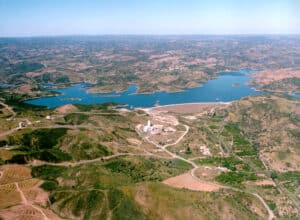No one has been infected, ARS says
The Algarve’s Regional Health Authority (ARS Algarve) is investigating the presence of the bacteria that causes Legionnaire’s disease at a school in the western Algarve borough of Aljezur.
In a statement sent to national news agency Lusa, ARS says the bacteria “was detected around 16 days ago” at the Professora Piedade Matoso school – namely the showers of the changing rooms of its sports pavilion – following tests carried out as part of the local legionella surveillance plan of the Public Health Unit.
“Taking into account the presence of this micro-organism in the tests carried out, the school was closed and the school management was advised to clean and disinfect it,” the statement adds.
ARS Algarve clarifies that “there is no record, nor is it expected that cases of Legionnaires’ disease will be detected” in the community as a result of this contamination.
The health authority also says it has been “monitoring this situation since the beginning” and is awaiting confirmation that the showers have been properly cleaned and disinfected “to perform new analyses.”
Meanwhile, the director of the Professora Piedade Matoso School Group, has announced in a statement that “access to the shower area of both changing rooms” of the gymnasium has been restricted at the behest of the local health delegate.
The statement adds that the showers will remain closed until the interventions are completed, which include “decontamination procedures and repairing the boilers.”
According to Paulo Esteves, the bacteria was only detected in the showers and there is no danger of infection from using the other water sources at the school, including the sinks in the changing rooms.
This is the latest legionella outbreak detected in Portugal, following another recently in the Algarve at Olhão’s municipal swimming pools.
Público newspaper reports that there have been four deaths linked to 66 confirmed cases (and another 39 suspected cases) of Legionnaire’s disease since the start of October across Portugal.
In addition to the death of an elderly person in a nursing home in Matosinhos, there were three other deaths due to Legionnaires’ disease that had yet to be publically confirmed.
Out of the total of 105 cases reported by the National Health Board (DGS), 62 were in the North region, and 27 were in the Lisbon and Vale do Tejo region.
As for the other three deaths, DGS said “they occurred in people aged between 77 and 90 years old, with one case related to the Matosinhos outbreak”, while the others were “sporadic cases with no evidence of a connection to the outbreaks or any other common source.”
What is legionella?
According to Portugal’s National Health Service (SNS) website, “Legionnaires’ disease is a form of pneumonia caused by the bacterium Legionella pneumophila and other species of the bacterium. The disease usually develops two to 10 days after exposure to contaminated water or soil.”
Symptoms are described as similar to the flu and may include headache, cough, fever, fatigue, shortness of breath, muscle aches and pains, diarrhoea and abdominal pain.
The bacteria that causes the disease is most commonly found in “water circuits, namely in places where aerosols are formed,” such as faucets or showers, ornamental fountains, irrigation systems, Turkish baths, Jacuzzis, and saunas, cooling towers, air conditioning systems and humidification equipment.
Possible complications from contracting Leggionaire’s disease include respiratory insufficiency, lung abscesses, generalised infection and damage to organs other than the lungs, meningitis and, in the most severe cases, death, the SNS website adds.
michael.bruxo@portugalresident.com


























